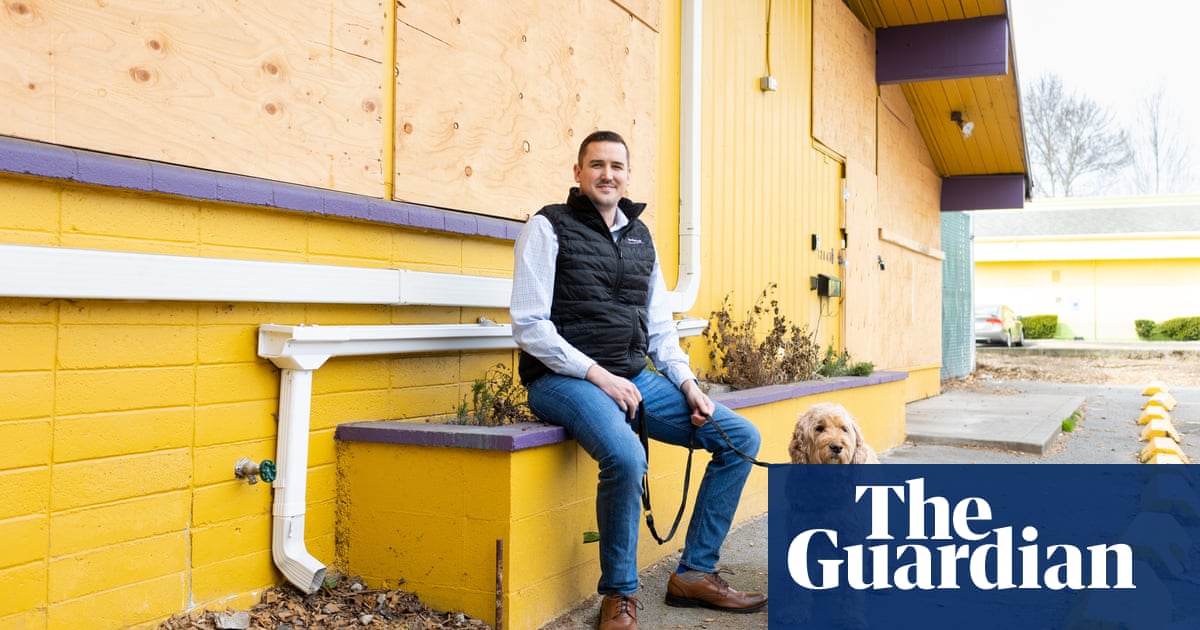
Ihave been a pet behaviourist for more than 25 years and have also worked for the film industry, helping animals to “perform” on camera. I have trained a 190kg boar to pretend to attack an actor, a cat to plunge shoulder-deep into water as if catching a fish and a cockatoo to winch up a bucket, take out a coin and drop it into a piggy bank. But when a TV company asked if I could teach a dog to fly a plane, I faced the toughest challenge of my career.
Initially I was hesitant about the project, which involved taking 12 carefully selected rescue dogs through a training regime that would ultimately allow three of them to take the controls of a Cessna light aircraft. I wondered if the idea was in the animals’ best interests, but was won over by the programme’s aim: to prove that an abandoned dog, given enough love and attention, is capable of far more than people might expect.
Four trainers were each allocated three of the candidates. My all-male crew was Alfie, an athletic lurcher cross; Blondie, a sweet-natured labrador; and a rambunctious bull terrier mix called Shadow. We started with fun tasks that tested the dogs’ memories, cognitive ability and emotional stability, training them to perform sophisticated moves in a short film, a puppet production and a music video.
I’ve written a book, What Dogs Want, teaching dog owners how to understand and train their pets, and for this task I employed the same basic techniques I’d recommend to anyone. By breaking down a complex manoeuvre into simpler, trainable chunks, I was able to get my boys to achieve polished performances. I used a clicker whenever they completed a chunk, to let them know exactly when they had succeeded.
The tasks gave us a good feeling for which three dogs might be most suited to flight school. By barking on cue and pushing buttons with their paws, they gave us an indication of their memory and dexterity. I was delighted when two of my charges, Alfie and Shadow, made it through, along with another trainer’s dog, Reggie. I was sorry to see Blondie go but, like all the dogs who took part, he went to an amazing new home.
We had only six weeks to turn the three finalists into pilots. The Civil Aviation Authority had issued guidelines: the dogs had to be secured while in flight, and we couldn’t make any alterations to the aircraft. I had a simple rig built to mimic the plane’s seat and controls. After making sure the dogs could be seated comfortably, we used a broom handle and a cutout piece of plywood to represent the plane’s steering yoke.
I concentrated on Alfie and another trainer, Charlotte, took charge of Shadow. One of the most difficult challenges, given the dogs’ enthusiasm, was encouraging them to use very subtle movements with their paws when steering.
During the flight, they would be sitting in the pilot’s seat, facing forward with their trainers behind them, so we had to come up with a way to give them steering directions. I designed a second rig, which could be placed in front of the dogs and included an arrangement of lights – red to veer right, blue for left and white for straight ahead. Each light also made a distinctive sound. We operated this system from the back seat via a controller.
After six weeks, I was delighted at how far the dogs had come. Their final test was to perform a figure of eight in an airborne Cessna, making banking turns while controlling their altitude. We needed a human co-pilot to take them to 3,000ft before giving control to the dogs (as diligent as our pupils had been, they weren’t able to take off and land safely).
All three of them performed admirably, flying the plane for minutes at a time, but it was Shadow who ultimately got the bit between his teeth and successfully completed the final figure of eight.
In the five years since making the programme, I’ve visited Alfie, who now lives in Rochdale, excelling in sports dog trials with his guardian, Cath. I also visited London and saw Shadow. He lives with Charlotte, who is making him a Hollywood star. Before the show, Shadow was only hours away from being put to sleep. It’s a situation tens of thousands of dogs find themselves in every year. They all have the potential to achieve amazing things if given the chance.
As told to Chris Broughton












